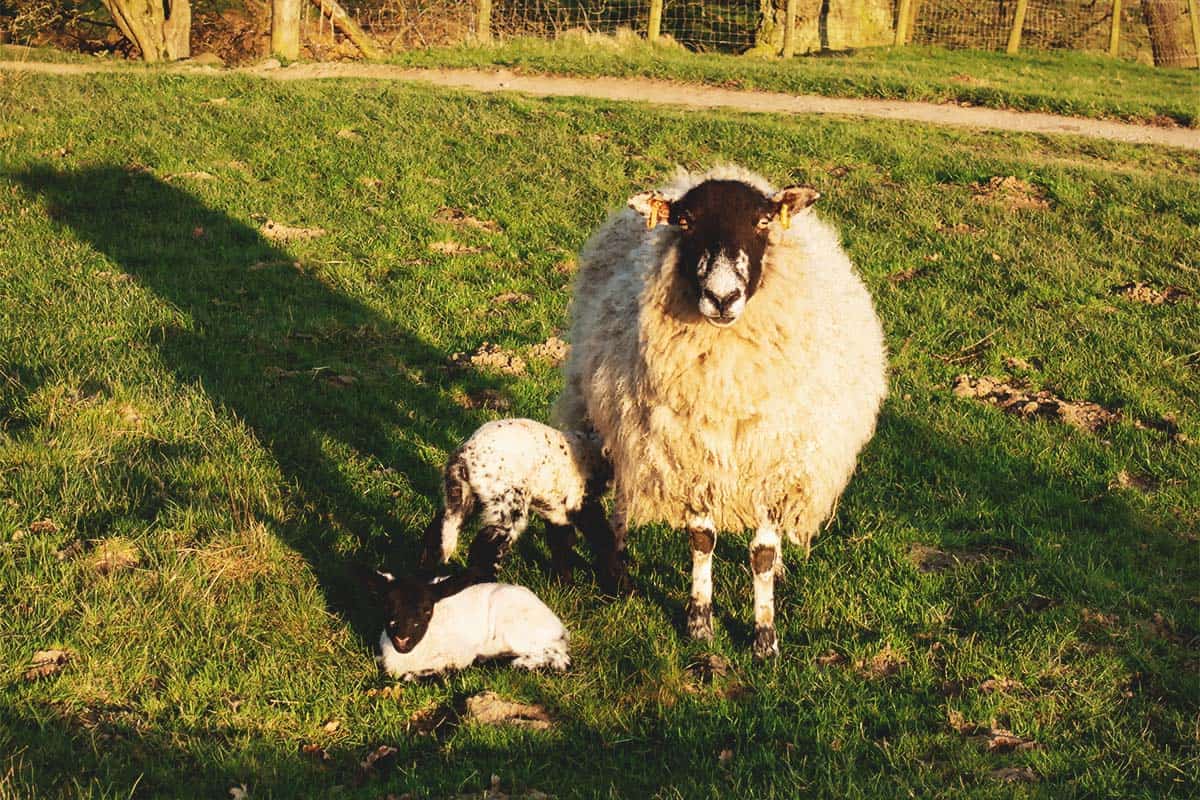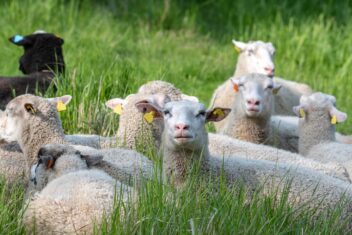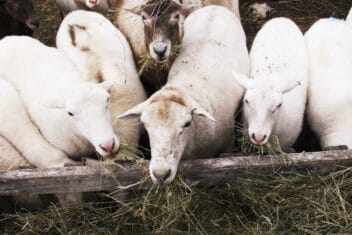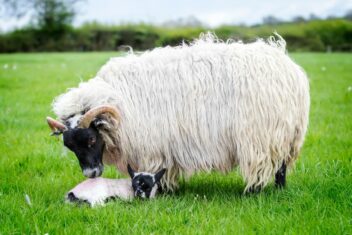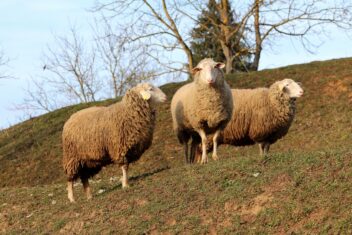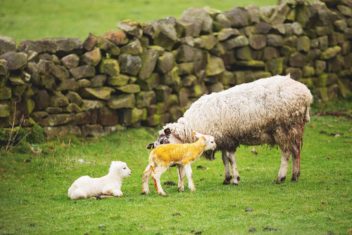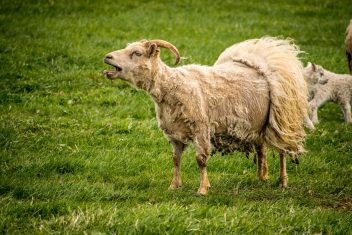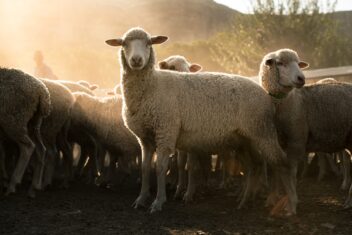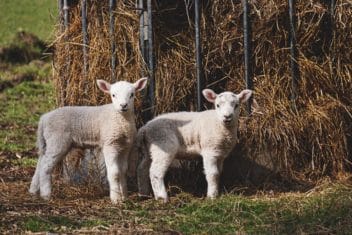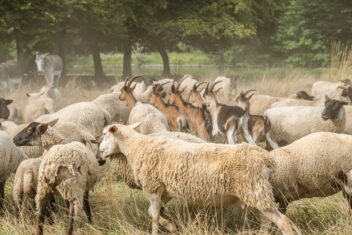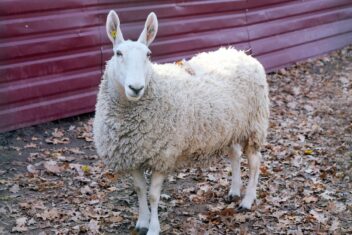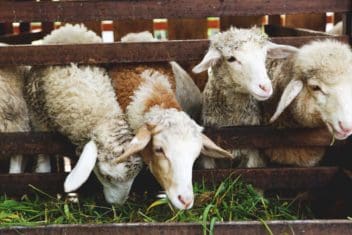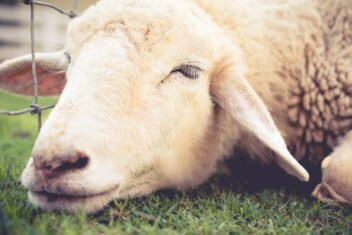I’ve interacted with all kinds of baby animals on my farm. However, there’s nothing I love more than the peace (and occasional chaos!) of lambing season.
If you’re new to lambing, the first thing to know is that lambs and ewes are remarkably resilient animals. There is very little you, as the shepherd, need to do to help intervene with the process.
Occasionally, though, things go wrong. It’s important to understand every aspect of a sheep’s anatomy – as well as how the lambing process works – in case something does go wrong.
We discussed sheep birth complications previously to help prepare you for this season, but now we will discuss another vital aspect: Colostrum.
Understanding the purpose and benefits of colostrum is essential if you are going to be raising baby animals of any kind on your farm, but especially sheep. In this article, I’ll tell you everything you need to know about colostrum and its importance for baby lambs.
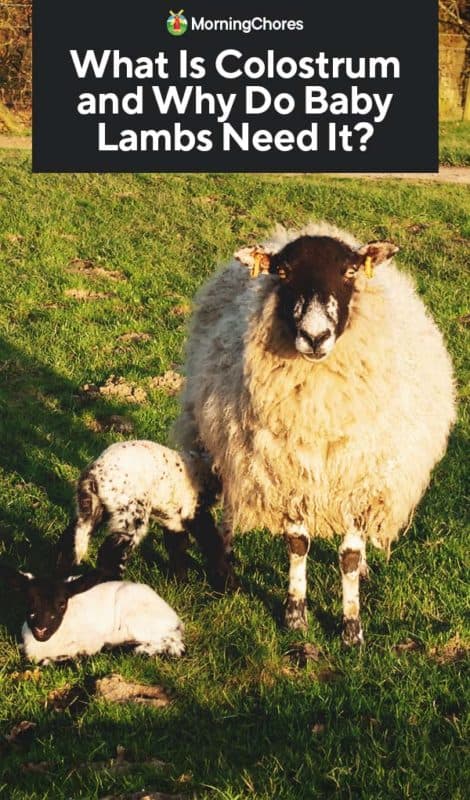
What Is Colostrum?
Colostrum is the name for the initial milk that all mammals produce after giving birth. It’s extremely nutrient-dense, but more importantly, it contains beneficial antibodies and is only produced for a short time.
The beneficial antibodies in colostrum help protect newborn lambs from disease and infection early on in their lives. If they aren’t able to take in these protective antibodies, they can succumb to seemingly minor diseases.
Colostrum should be consumed within 12 to 18 hours of a lamb’s birth. The sooner, the better, but after 24 hours, it no longer has as much benefit. The reason for this is twofold. One, a ewe’s colostrum production dwindles after 24 hours while the antibodies in the milk will begin to decrease.
Second, a lamb only has the physiological ability to absorb the antibodies in the colostrum for about a day.
The takeaway of all of this? Colostrum is incredibly important. It is imperative that your lambs have access to it within the first few hours of life.
The Benefits of Colostrum
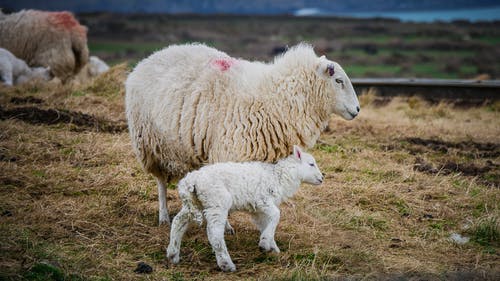
There are all kinds of benefits to colostrum as it relates to lambing.
Not only does it help reduce inflammation, preventing the likelihood of infections, but it also strengthens your lamb’s immunity. It can help fight off diseases that may threaten your lamb both immediately after lambing as well as later on in its life.
Colostrum can also support healing, both for your lamb and for its mother. It helps both recover from the birthing process and bond with each other in the very early days of life. Plus, colostrum is the best cure for hypothermia. It restores your lamb’s energy and gives it the strength it needs to shake off the cold.
Challenges With Providing Colostrum
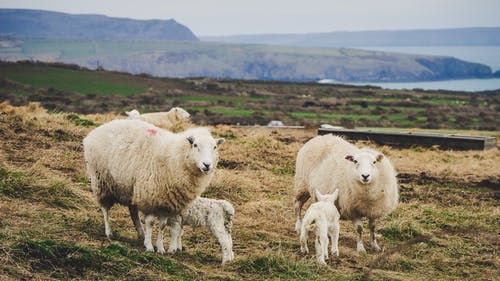
It might sound like providing colostrum is simple. Nature will take over and make sure the baby gets all the colostrum it needs, right?
While that’s true 98% of the time, there are some situations where you may have challenges getting your lamb the necessary amounts of colostrum.
Here are some of the most common ones.
1. Problems With The Mother’s Supply
Occasionally – though rarely – an ewe won’t “come into” her milk right away. This can happen if she is very young or if she had a very traumatic labor experience.
Sometimes, your ewe may have trouble with her supply because she dropped twins or triplets and just isn’t producing enough to keep up. It could also be that one teat is not producing or letting out milk. You will want to keep a good eye on your ewes and lambs to make sure the lambs are nursing.
If you suspect that there is an issue with supply, don’t delay. Make sure you take immediate steps to figure out the problem (you may need to call a veterinarian) and get the lambs the colostrum they need, even if Mama can’t supply it herself.
2. Baby Refuses to Nurse
When a lamb is firstborn, it will usually spend the first few minutes of its life lying on the ground, getting its bearings. After that time, its mother will begin licking and nudging it to get it up and on its feet.
Again, 99% of the time, that’s what happens. But there are situations in which things don’t go as planned.
If a mother is delivering a sibling (or two), she may be distracted by the birth and unable to tend to the baby that has already been born (although this is uncommon). It is more likely in ewes who are experiencing some form of difficult labor.
Similarly, if the labor was traumatic in any way, the lamb may have a hard time nursing right off the bat. If you can’t get it to nurse because it’s too weak – or worse, because it wanders away while the other lambs are being born – you need to manually feed the lamb.
3. Udder Issues
Mastitis is a common issue that can lead to issues with providing colostrum. However, it’s less common than you might think. Mastitis is an infection of the mammary glands. Usually, it doesn’t arise until after Mama has already been nursing a while (though it can sometimes rear its ugly head before then, too).
However, what frequently happens in sheep is that the wax plug doesn’t clear when the lambs first begin to suckle. All ewes have a waxy plug on their teats which serves a beneficial purpose – it helps prevent infection. However, it can be hard for a lamb to get out and nurse effectively.
That’s especially true if the lamb is weak or not overly interested in suckling.
Therefore, as the shepherd, you should make a point of checking the teats of all ewes who have just dropped lambs. Make sure the wax plug clears before you leave your animals alone. If the wax plug stubbornly remains, your lambs may have a difficult time suckling. They will not only be unable to access the colostrum, but they’ll be unable to get any kind of milk at all.
Sometimes, your lambs may have a hard time suckling because your ewes have odd or irregular teat conformation. In a normal ewe, the teats should be tight to the bag and pointed out at a slight outward-facing angle. They should not be pendulous or hang straight down to the ground.
Lambs have a hard time locating milk (and of course, colostrum) if the teats are not conformed properly. The problem begins to build on itself as Mama keeps producing milk and her bag becomes even more swollen (and her teats even more pendulous and misshapen).
In this case, you may have to manually milk her to expel some of the built-up milk. It may seem like a waste to expel all of this milk. You can always collect it and feed it back to the lamb in a bottle. The main goal is to make sure the lambs are able to nurse within that first 24-hour window to get all the colostrum they need.
How to Make Sure Your Lambs Get Colostrum
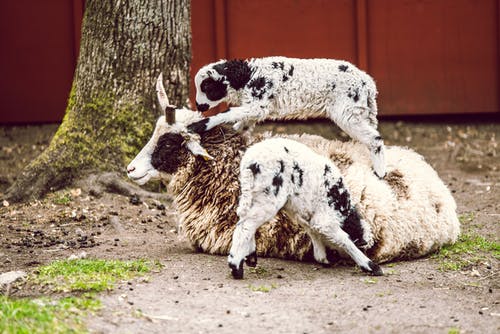
1. Recognize the Window
Colostrum is essential within the first 24 hours of life. The earlier in that window, the better.
In the first few hours, colostrum provides your lambs with the energy they need to get warm and stay warm. Lambs are born with a small supply of brown fat, known formally as brown adipose tissue. This provides an immediate source of energy and a bit of warmth.
However, once that supply dwindles, colostrum is essential. Immediately after birth and until they suckle from their mothers, lambs only have one way of generating heat – they need to burn that “brown fat” in order to stay warm.
The antibodies in colostrum can help protect against common lambing diseases. Each lamb should suckle for the first time within 30 minutes of being born and that first feeding should never have to occur after more than 12 hours post-lambing.
Of course, you will want your lambs to feed after 12 hours, too. That 12-hour window refers to the time period in which the first feeding should occur. The sooner to birth the feeding can occur, the better.
2. Manually Feeding a Lamb
As mentioned previously, in some instances you may have to manually feed a lamb, whether it wandered off or Mom was too busy with the births of siblings.
Before you do anything, make sure the lamb is warm. Its ears should not be cool to the touch and it should be moving around, calling for its mother. If this is not the case, get the lamb to a heat pad or heat lamp first. The lamb will not nurse until it is warm, and even if it is able to nurse, it may suffer from digestive problems that can kill it.
Once you get the lamb warm, you will need to encourage it to suckle from the teat. This is the best and most natural option, especially if you don’t plan on bottle-feeding a lamb for its entire life. If you have to, you can bottle feed the lamb or feed it with a tube, but those should be last resorts.
3. Don’t Be Afraid to Use Supplements
In an ideal world, every lamb would be born healthy and able to nurse immediately from its mother.
The reality is that it isn’t always possible.
Whether you were unlucky enough to lose the ewe during labor or she (or the lamb) has some other medical condition that prevents suckling, you will need to use supplements. Don’t be afraid of intervening when necessary. Of course, natural is always best, but doing something is better than letting the lamb die.
You have a few options.
You may be able to get colostrum from another ewe that has lambed at the same time. If that’s the case, you can set aside five ounces for your lamb.
A more common alternative is to purchase colostrum from a farm store. It is very expensive, but it’s a good item to have on hand. Make sure you read the instructions carefully on how to mix it so you don’t over- or under-feed the lamb. This can be given in a bottle in one or several separate doses.
There are some people who swear by using cow’s colostrum as a substitute for sheep colostrum, too. It won’t be as good as sheep colostrum, but it’s an option if you already have cows on site.
4. Note that the Amount and Frequency Can Vary
Your lambs need to get a large amount of colostrum as soon after it is born as possible. Ideally, the colostrum should equal at least 5% of its body weight, spread out over two to three feedings, during the first 12 hours of life.
The average ten-pound lamb, therefore, would need eight ounces of colostrum over two or three feedings. You shouldn’t give more than six ounces at any one feeding, but it’s unlikely that most lambs will suckle this long, anyway.
Again, though, the amount and frequency will vary depending on the size and overall health of the lamb. If you can only get a few ounces into your lamb, that’s better than nothing.
Can Colostrum Be Given After 24 Hours?
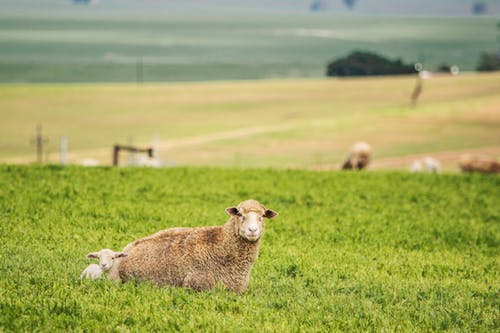
We had a situation on my farm this year in which we realized an ewe was not able to nurse her lamb until it was very late in the game. It was more than 24 hours after the lamb was born.
Her problem was related to pendulous udders and hard plugged teats that made nursing impossible. By the time we found the lamb, he was very cold and almost dead.
Everything we read said that there was no benefit in supplementing with storebought colostrum after 24 hours. We figured it couldn’t hurt and gave it a try. I can’t say for sure whether it was the late colostrum feeding that did it or whether we just got lucky. Nevertheless, the lamb bounced back and is now several weeks old and incredibly vivacious.
At the end of the day, while colostrum probably isn’t beneficial after 24 hours, this “liquid gold” still remains a mystery to many. By understanding exactly what it is and why it’s so important for your lambs, you will be on your way to becoming a successful shepherd.
